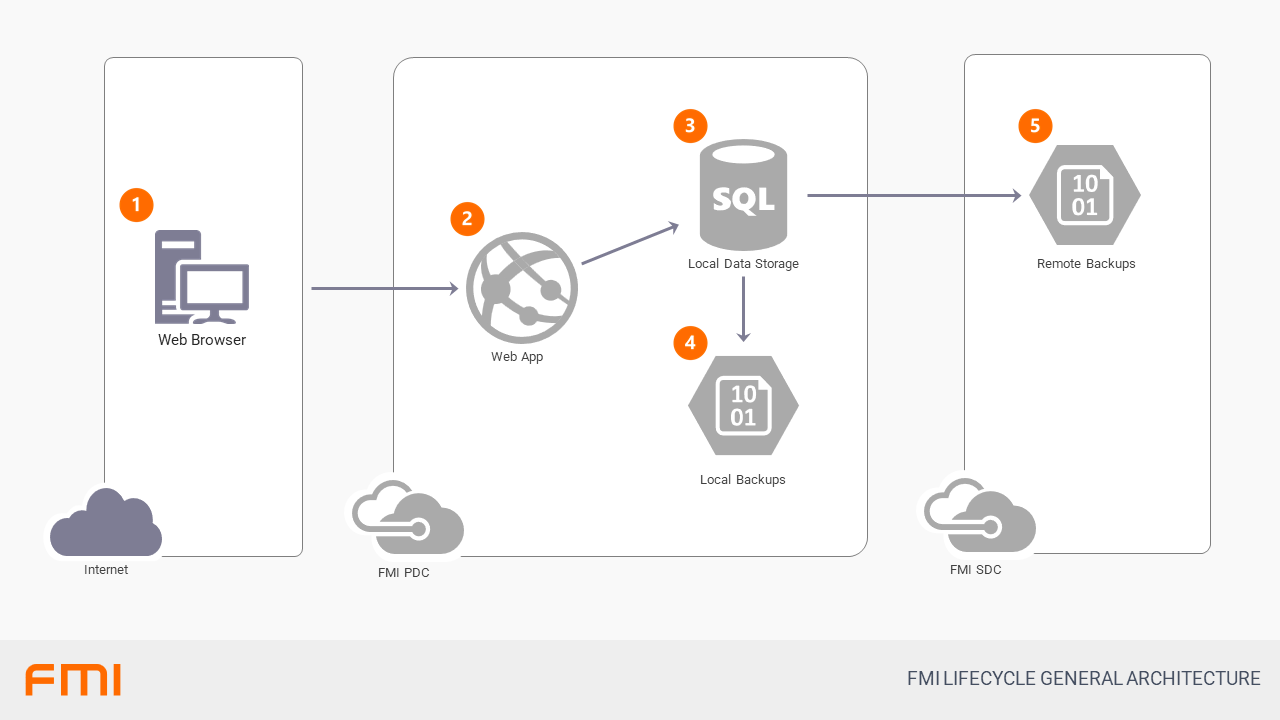Describes the operational requirements for the FMI Lifecycle product
This article is for IT and security professionals
Technical Overview
FMI Lifecycle (previously known as Sapphire) is a cloud-based asset lifecycle solution providing future visibility of costs across all your assets.
Devices
While FMI strives to support a range of web browsers, from time to time features of modern browsers will be required that will stop older browsers from working optimally. As such, we provide support for the latest three (3) versions of Google Chrome, Microsoft Edge, and Apple Safari running on latest two (2) minor releases of Windows and/or MacOS.
Architecture

- The Sapphire solution is delivered as a web application that is designed to be run on any modern browser, including Chrome, Edge, Safari and Firefox.
- The web servers running Sapphire work as an elastic web farm, where FMI can add any number of servers on the fly to accommodate capacity requirements.
- FMI actively monitors the responsiveness of these servers and ensures adequate capacity for needs.
- Auditing and alerts on these servers are continuously fed into our development cycle to improve the product over time.
- FMI Lifecycle is a Single Page Application (SPA) and the web servers provide an API interface for the application.
- API calls are secured with Json Web Tokens (JWTs)
- Most data in Sapphire is stored in a SQL Server compatible database in the cloud (Azure SQL Database). Other data, specifically large quantities of analytical data, are stored in a NoSQL data store (Azure Cosmos DB).
- This is a managed, elastic capacity database allowing for adequate capacity for clients.
- Databases are actively monitored and scaled to demands.
- These databases are managed using HA facilities provided by Microsoft.
- To ensure against data loss, databases backups are maintained for the Cosmos DB and Azure SQL Server Databases.
- For more information, see Data Backup and Auditing.
- Additionally, multiple copies of all data are maintained in a secondary data center to recover from any catastrophic incidents at the primary data center.
- For more information, see Cloud Provider Statement